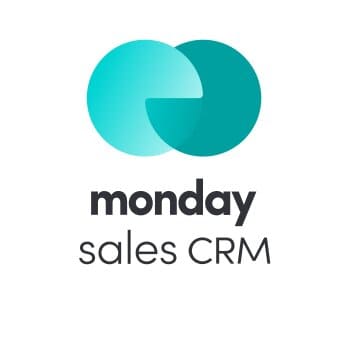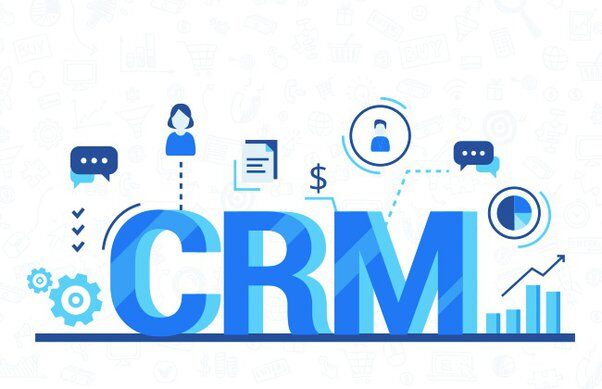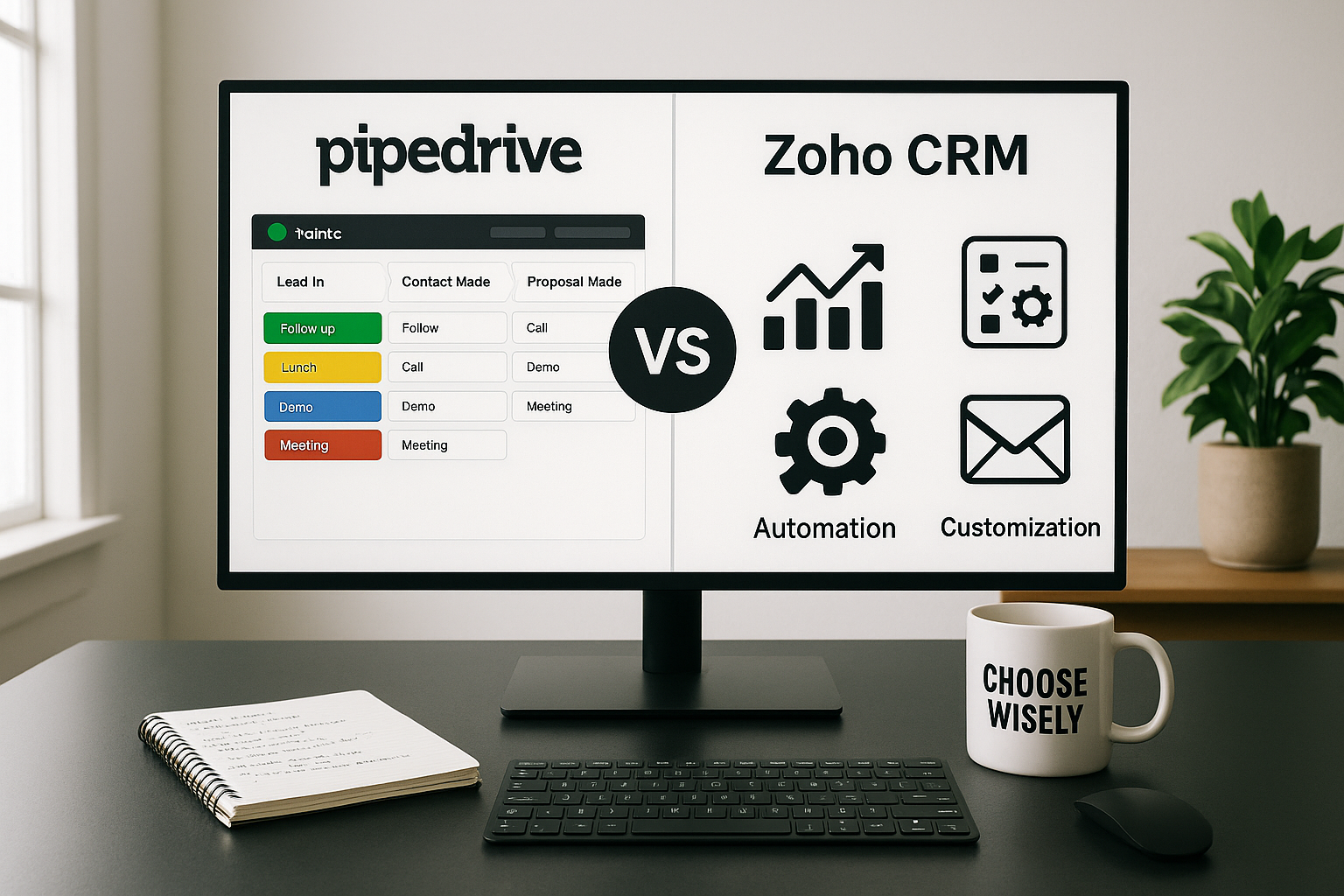The use of CRM is a great contribution in the future of business. The implementation of the CRM system is the final stage. But today many companies are facing CRM challenges, considering that automation of business processes does not take much time. In the future, it will pay for all the costs of integration.
You can consider to implement these top-rated CRM solutions:A successful CRM implementation is an interaction of technology and people. However, there might be issues in the process that can cripple the platform’s effectiveness or ruin the effort altogether. So, because CRM is fundamental to the growth of the business as a whole, it is important to know how to encounter problems as well as to overcome them. In this article, we will look at the most common CRM problems and solutions.
Why is CRM implementation important?

CRM implementation is important because it helps businesses improve customer satisfaction, streamline internal processes, make data-driven decisions, and foster collaboration across departments. By centralizing customer data and automating manual tasks, CRM systems enable organizations to deliver personalized experiences, boost productivity, and enhance decision-making capabilities. This ultimately leads to stronger customer relationships and increased competitiveness in the market.
What are the challenges of CRM implementation?
Selecting a solution that perfectly matches your organization is crucial and can't be overstated. Just because an application is popular and packed with features doesn't mean it will suit your needs. It's essential to evaluate several factors before making a decision, as many organizations have faced costly errors from overlooking these aspects.
What are the problems with CRM implementation? Let's explore a few of them:
№1. Lack of Functionality
CRM system is a software package with which several departments of the company work and it is important that the implementation goes smoothly on both the practical and the technical side. Every business has its own list of functional characteristics. This is a concise description of requirements in those areas that are related to the work of an employee, department, or company.
To avoid this one of the CRM challenges, you should make sure that all the features that you would like to see in the process of work are present. So, if incoming calls are very important to you, you need to make sure that the selected CRM system supports integration with telephony. Working with clients, transactions and everything connected with them is the main scope of CRM systems. That’s why this functionality must be implemented at the highest level.
Not surprisingly, among the key criteria of CRM selection, 45% of our responders singled out the functionality and user-friendly interface. So, many businesses are struggling to find a solution that easily enables them to achieve all of their objectives. It became a problem within the industry because there are some systems in today’s market that offer only specific functions. That is why the company can suffer from lacking the important features, that may lead to:
Poor data quality. Among the main roots of dirty data, you may find incorrect information entry, various transpositions and typos, misspelling as well as deduplication of the records. As a result, the problems range from redundant mailing addresses to failed projects and bad corporate decisions based on the wrong info.
The Way Out: If you want to ensure that your existing information stays relevant, consider the following:
- create the same set of rules and requirements of the data entering for all your employees
- make sure your solution supports the deduplication option
- use different filters or tags to monitor the sources of the coming information
- audit data by asking your customers to verify their details regularly
Integration mishap. In order to satisfy the needs of the customers, the solution should be equipped with all main features that help to organize the whole business process from creating a lead to delivering a purchase. So, very often, to fully realize the value of the chosen platform you end up integrating with other applications that leads to additional costs.
The Way Out: So, you should examine the CRM market first and choose the platform that fits the needs of your organization in the most valuable means. Also, you can visit a CRM marketplace of applications and find a module that may be easily integrated with your system.
№2. Cost Matter
It is no secret that any high-quality product is expensive. But everyone knows that the most expensive goods are cheap goods, because they are of poor quality, quickly fail and often have to be repaired. A lot of people say: “CRM is crazy expensive, but there is no benefit right now” but it’s not.
The number of automated processes is so great, that it will quickly pay off itself thanks to time saved, resources freed up and other factors.
One of the critical factors is the CRM price, so 35% users we polled agreed on that. Lately, many business owners prefer to switch to the different platform because their software became too expensive as the company expands to a certain number of sales, marketing, and customer service reps. Furthermore, because CRM can encompass so many parts of the business, it is easy to run up an unexpectedly large bill for setting up and optimizing a system.
Hence, with the variety of solutions on today’s market, there is no trouble to find the one that includes all the features your organization needs at a lower price. Furthermore, if a number of CRM users within your company is up to 10, you can easily save a lot of money by utilizing reasonably priced systems, such as Vtiger On-Premise, SuiteCRM, Zoho CRM or Bitrix24.
Your costs may be higher if the implementation is accompanied by a large number of corrections and improvements. To solve this one of the challenges of CRM, you should think through everything in advance and discuss all the nuances with the developer company.
Remember – a miser pays twice.
Powerful CRM System

4.7
№3. Employee’s Resistance for a Change
For an organization to succeed at operational and organizational change, the team must share a common vision and articulate a clear destination. However, sometimes getting to grips with a new system, particularly when the old one has been in place for a long time, may lead to the low employee-adoption rates. So, when we asked our CRM users if their teams come short of managing high-quality customer information, 20% of responders answered that the companies require more profound knowledge of CRM data organization.
Naturally, many workers will resist such changes, they simply do not want any innovations. Employee’s resistance for a change lies in the fact that any innovation adds work to the employee and forces him to learn. It is necessary to prepare employees in advance and talk about future changes and their positive aspects. This can be difficult at first. Some employees are afraid of constant control from leadership.
To solve this one of the CRM implementation issues, you need to competently explain to your employees the value and necessity of working in CRM, and show how it will facilitate their daily work. Provide the training, shoot videos or write articles, take an exam. Employees of the company, who will try their best to work in the new CRM system, will be encouraged.
Remember that you have to think not only about the CRM technology, but also about the people who use it.
Ultimately, in essence of helping your staff to meet a change and get out of their comfort zone, you should consider the following suggestions:
- Rollout the software implementation gradually to avoid overwhelming with information
- Demonstrate their commitment as a role model of change
- Provide compelling justification for why new adjustments are happening
- Communicate a clear understanding of the goals and objectives of the change
- Arrange sufficient resources, projects, and training
- Conduct frequent audits to consistently assess their results against expectations
So, to reap the benefits of innovative technology, you should emphasize the users on how to establish throughout the organization a shared understanding of the switch importance.
№4. Poor CRM Strategy

There are many CRM systems on the market today. It’s hard to choose the right CRM that’s right for you. The selection of a CRM system begins with the formulation of the main goals of the company. To solve this one of the issues in implementing CRM software, you need to pay attention to:
- functionality
- ease of use
- integration with other programs
- technical support
- CRM update
- price
The system must ensure data security. Each employee should have access to the information that he needs to work. The right choice is different for everybody. One company can not do without big expenses with email marketing services, for another company, working with IP telephony is more important. Choose the system that gives you the features that matter most to you and that can later be modified for other tasks.
№5. Dealing with the Time and Cost of CRM Implementation
One of the challenges of CRM is the lack of time and resources to plan a quality strategy and ensure a smooth transition to new software. Yes, the implementation of a CRM system requires considerable time. The implementation costs of the system can scare away potential buyers. But the competent selection of a CRM system will avoid unnecessary costs.
A CRM system should be chosen primarily based on the needs of the company. And secondly – to consider the cost of CRM and its implementation. The price of a CRM depends on many factors: functionality, promotion of the program, and even the country in which the developer is located.
By buying a CRM at a high cost, you can not only overpay for redundant functionality, but also complicate the life of the company by the unnecessary settings of the system.
If you think that you can fully implement CRM in a week, you are wrong. The larger the scale of the business, the number of settings, integrations with other systems, the longer the setting time will be. After implementing and maintaining any CRM, be prepared that you will not see the result immediately. Employees need some time to get used to the program. This may take several months. To save time, you should break down implementations into phases that clearly describe which processes need to be configured. A CRM system, like any other business tool, requires examination and proper use, so you should understand exactly what you expect from its use. Finally, one of the main advantages of CRM systems is the improvement of the overall quality of customer service.
All in all, our survey helped us to research the main issues of CRM administration and organization as well as to provide you with the practical solutions for your business renovation. Lead management, social media integration, email marketing campaigns, ease of customization are the most important characteristics to build successful company-customer bridges.
So, each CRM is aimed at an individual approach to work. The CRM system allows you to work with each client and take into account its characteristics. Implementing a CRM system is a fairly complex process that requires careful preparation. Of course, we can talk about common CRM issues for a long time, but the fact remains that the world is evolving, and we have a duty to develop with it.
№6. Poor Communication
CRM implementation decisions are often made by top management due to budgetary and procedural changes. It's essential to inform the entire staff about these decisions and the subsequent steps, with ongoing support from leadership throughout the implementation process. Failing to communicate effectively can create insecurities and mental barriers among employees.
Communication issues also arise when CRM is in use, but salespeople cannot update it on the go with meeting details; instead, they rely on support staff to do it for them. This situation doesn't solve this problem, but it creates new ones, as it requires double effort from salespeople.
To address this one of the challenges of customer relationship management, you need CRM software with a built-in communication management module for seamless customer service. For example, if a prospect or customer calls and the team member they previously spoke with is unavailable, another team member can quickly access notes on email communications, meeting discussions, and more to answer any questions efficiently.
№7. Approving with Management
Although the advantages of a CRM system are evident, getting management approval for such a significant investment can be challenging. Decision-makers might hesitate due to the high cost, the hassle and problems with CRM implementation, or the difficulty in quantifying some benefits beforehand. There's often a mindset of "if it ain't broke, don't fix it."
The key to gaining approval often lies in how you present the solution. Ensure you clearly demonstrate its specific value to your organization. You can trial certain aspects of the system to showcase potential time and cost savings when scaled company-wide. Additionally, illustrate how efficiency improvements can provide a competitive edge. Highlight existing issues, and how they negatively impact company performance, and show how your proposed solution would address these problems.
№8. Inadequate Training

The importance of training and its consequences are clear and need no further explanation. However, training is vital not only for the efficient and correct use of a new system but also to motivate your staff to embrace the change.
For many employees, learning new skills represents career advancement and a source of motivation. They are enhancing their profiles with new competencies, benefiting personally as well as professionally. This creates a win-win situation for everyone involved.
By inspiring your staff to adopt the new solution, you make the transition smoother. After training, you'll have a more skilled workforce operating a system that boosts your efficiency and productivity.
№9. Poor Data Quality
Following the principle of "garbage in, garbage out," poor-quality data entered into a CRM system will result in poor-quality outputs. This poor or incomplete data can stem from various sources, such as errors during the import process from an old CRM or incomplete entries by sales representatives.
To avoid this issue, your company must meticulously import existing CRM data to ensure its integrity. Additionally, it's crucial to incentivize CRM users to accurately input new data, thereby maintaining the overall quality of the information within the system.
№10. Bad Data
Poor data quality can cause major issues, from duplicate records to inaccurate information and inconsistent entries. These problems can disrupt your system significantly. However, as humans, we inevitably make mistakes.
To mitigate these issues, establish a CRM routine guide from the beginning. This guide is crucial for CRM success, helping everyone in your company understand the why, what, and how of data management. It ultimately leads to better results.
As part of this guide, set clear data entry guidelines. For example:
- How to report sales within the company.
- How to register and track leads.
- How to update and manage customer profiles.
However, don't set it and forget it. Routine guides should be dynamic. Regularly review and update the guide to align with organizational changes.
Over time, your system will accumulate duplicate and outdated data. At least twice a year, your teams should conduct a data clean-up, updating:
- Companies
- Contacts
- Email addresses
- Company postcodes
- Company cities
- Projects, etc.
Reasons for CRM Implementation Failures:

Communication Gaps
If employees are left uninformed about the CRM transition, whether intentionally or unintentionally, it can lead to poor CRM deployment and inadequate training, ultimately causing CRM issues and challenges. Conflicting information about the migration can also confuse employees, making it hard for them to discern facts from fiction, which further hampers their ability to effectively use the CRM.
Form a committee with representatives from each affected department to oversee the adoption process. You hired your staff because you trust their judgment, so involving them in this process can save you many potential headaches.
Limited Organization-wide Adoption
Presenting CRM as a crucial, time-saving tool will motivate users to embrace it widely. Managers should emphasize that CRM software is essential for documenting all daily interactions made by the sales team. Convincing sales representatives that CRM is more than a tracking tool but a system that keeps them informed about upcoming appointments, open customer cases, top opportunities, and the latest client communications.
Additionally, introduce CRM as a help-desk tool for customer service executives. Utilize the CRM’s service module to log and track customer cases, monitor priority issues, assess employee performance using SLAs and escalation features, and review the solutions provided.
Inadequate Technology Integration
Nearly every process in a company relies on some software to handle manual tasks. However, issues arise when these systems are not interconnected, leading to a lack of data flow between them.
Understanding the needs of the business and its employees is crucial when choosing a CRM software tool. A successful CRM implementation must ensure that the system meets the needs of all employees, whether they are management users, sales representatives, service executives, or marketing managers.
Using the full potential of the CRM system will elevate the standard of customer service, boost company revenue, and consequently, raise commissions for sales representatives.
5 Steps to Successful CRM Implementation

Plan a CRM strategy
If you confine your CRM usage to recording customer information, creating opportunities, and tracking them from initial interest to purchase, you're missing out on potential opportunities—using a spreadsheet or database might even be more effective in this case.
CRMs offer far greater potential, but to harness their full power, you must develop a strategic implementation plan to leverage their functionalities and customize the platform to align with your sales process and vice versa:
- Begin by defining your goals for CRM adoption: Are you aiming to boost revenue, improve NPS scores, decrease churn rates, enhance customer satisfaction, or achieve all of these objectives? Write them down.
- Next, craft an ideal customer persona, outlining details such as their role, age, team size, income, budget, pain points, and more.
- Describe the customer journey: How do customers progress from being unaware of your product to becoming aware, interested, and finally making a purchase, with a focus on retention afterward?
- Determine how you'll guide customers through the sales process and provide ongoing support post-purchase.
- Lastly, identify which software products in your stack you plan to integrate with your CRM to streamline business operations and enhance efficiency.
Select a CRM software
The important step to ensure a successful implementation without problems with CRM systems is selecting the right CRM vendor that aligns with the organization's needs and objectives. This involves thorough research, evaluation, and consideration of factors such as scalability, customization options, and integration capabilities to choose the best CRM for your business.
Thorough data migration
Once the CRM software is chosen, the focus shifts to data migration. This step involves transferring existing data into the new CRM system while ensuring accuracy, completeness, and data integrity. Meticulous planning and execution are essential to prevent any loss or corruption of valuable information during the migration process.
Conduct training and change management
Following data migration, the next crucial step is conducting comprehensive training sessions and implementing effective change management strategies. Training is essential to avoid issues with CRM and familiarize users with the software's features and functionalities, empowering them to leverage its capabilities effectively. Implement change management strategies to overcome any resistance or concerns among employees, fostering a smooth transition and ensuring buy-in from all stakeholders.
Finally test and launch
As the implementation process progresses, rigorous testing becomes paramount. Thorough testing of the system allows for the identification and resolution of any problems with the CRM implementation before the official launch. This phase involves testing various scenarios and functionalities to ensure the system performs as expected, providing a seamless user experience.
What is the benefit of the implementation of a CRM system?
In conclusion, understanding the benefits and challenges of CRM implementation is crucial for any business aiming to thrive in the market. The implementation of a CRM system offers many benefits for businesses. By streamlining customer interactions, enhancing internal efficiency, and facilitating collaboration across departments, CRM systems are invaluable tools for driving success in the marketplace.
From improving customer satisfaction and loyalty to boosting productivity and decision-making capabilities, CRM implementation enables organizations to forge stronger relationships with customers, increase operational efficiency, and maintain a competitive edge. As businesses continue to evolve and adapt to changing market dynamics, investing in a CRM system remains essential for achieving long-term growth and success.
For more information about CRM, please contact us.


(2).jpg)


